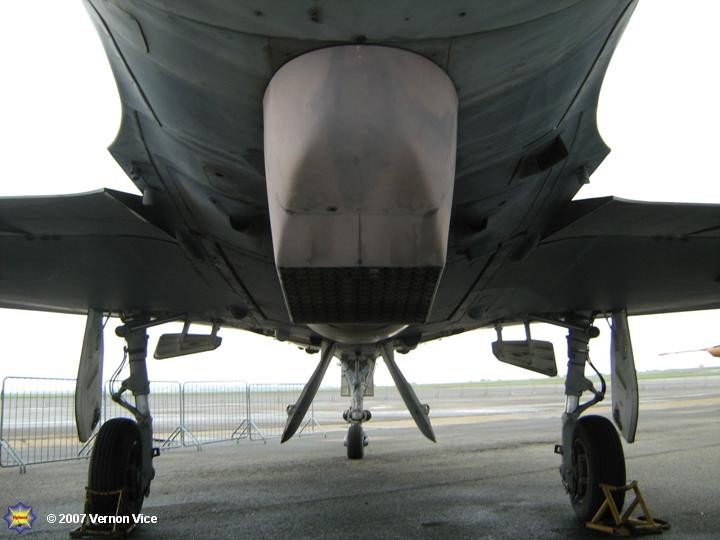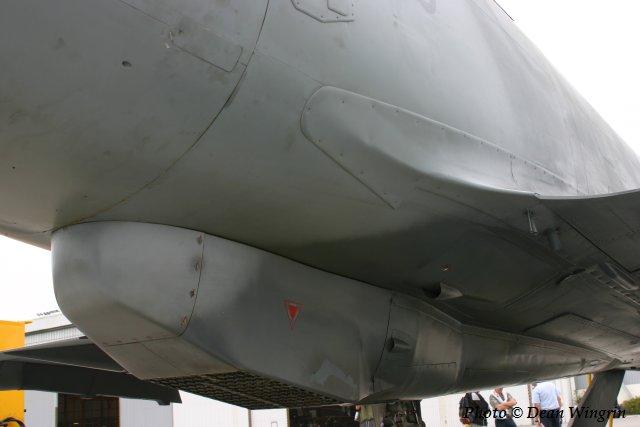Would you like to see this aircraft in-game?

An Introduction:
Most Mirage users across the globe realized some sort of modernization on their fleet, the one we’ll be seeing here is probably one of the more interesting done to the original Mirage airframe, the Atlas Cheetah D…The Cheetah program was 2 part plan to increase the SAAF capabilities in times where the options to acquire newer combat aircraft were null given the international arms embargo that was being imposed on the country. This Aircraft along with the Cheetah E (topic of another suggestion) would be direct upgrades of the already existing Mirage III that was already in the Inventory of the SAAF.
History and Service:
The history of this aircraft and the Cheetah E is very similar, thus why both are almost identical in both suggestions…
The need in difficult times
The story of the Cheetah dates back to the late 70s and early 80s, during those years South Africa was under an Arms embargo, this meant that no nation was allowed to do any kind of military Sales with SA. This would have a deep effect on the South African Air Force (SAAF), mainly when the servicing and maintenance of most of their aircraft was affected by the lack of spares. The SAAF saw the Mirage F1 as the most “fit” candidate for a proper modern combat aircraft, but given its low numbers and the fact that France would not allow a sale of said aircraft to increase the SAAF numbers, a more radical solution was sorted out, a part of the Mirage III fleet was going to be upgraded to a more modern standard. The upgrade of the Mirages was planned as a proper stopgap to anticipate a more capable fighter (thing that would come in the form of the Cheetah C…but thats another story), this upgrades weren’t rare, as quite a large number of Mirage operators around the globe were dealing with modernizations/upgrades and modifications for their Mirage fleet (whether it was Mirage V o III) with the objective of putting the French fighter on par with more modern aircraft.
The Israeli Connection:
During this time only 2 Nations officially offered said upgrades, France and Israel, the French option was discarded from the start as France was one of the nations that were enforcing the embargo on South Africa. Israel on the other hand…they already were in good terms with South Africa, and more importantly, they were consolidating themselves as an arms supplier of the African country (This would be seen in the sale of missiles, artillery shells and even in cooperation for a Nuclear program). Israel had experience upgrading the “Legacy Mirages” as by that time, they already had upgraded their own, and more recently they were upgrading the Fleet of the Argentine Air Force (A similar but more simplistic standard to what are we going to see in the Cheetah E), this experience and the fact that Israeli companies could produce most vital components of the upgrade made them exactly what the SA Government was looking for.

An IAI NESHER undergoing upgrades during the late 70s/early 80s
One of the Things that the SAAF put as a requirement was the possibility of carrying out the upgrades in the country at the hands of ATLAS, a company that was known by its license production of aircraft and helicopters as the Impala (italian Mb.326), Puma, Alouette III and the assembly of various Mirages. Even though the first units to be upgraded would be done in Israel, the rest of the aircraft would be upgraded in South Africa. (Its unknown how many aircraft were upgraded in Israel, with at least the initial test units confirmed).
Know–your–Mirage:
South Africa was a very large Mirage operator, one of the only ones to have C,E,B,D,D2 & R versions in operation (Mirage F1 is not included here), from this “pool” of Mirages, only some were to be converted. The models that were initially discarded were the C & B variants, this were the first mirages to be adopted by the SAAF, the C/B variants were in a rough state, were smaller than its more modern brethren and had the old Atar 9B engine…making them a bad choice for an upgrade, this would leave the much fit IIIE/D/D2 for the works. The IIIE was a newer aircraft, longer and with a more powerful engine than the C, the examples in the inventory of the SAAF were in better shape and were clearly seen as the main candidate for the Upgrade. The entirety of the Mirage IIIE/D fleet would be subjected to the conversion (with the exemption of 1 unit previously lost).

SAAF Mirage IIIC
Even though South Africa had a decent number of Mirages, another model would make its arrival to also take part on this upgrade, the Nesher T, this were the 2 seat training versions of the famous Nesher Fighter used by the Israeli Air Force. The SAAF would acquire a total of 5 units that were among the last available for sale (this sale also included what some describe as Second hand Kfir’s for the Cheetah C project), this Nesher Ts would be used for another upgrade, along the Mirage IIID/D2s, under the name “Cheetah D”.
Good old Mirage Upgrading:
The initial Cheetah program would be split into 2 aircraft, on one side the single seat Cheetah E (Mirage IIIEZ upgrade, subject for another suggestion), while on the other there was the Cheetah D (Mirage D/D2 and Nesher T upgrade). The 2 would serve for the same roles, although the D variant would be more focused on Ground attack and training, while the E variant was the common single seat multi role combat aircraft. Both upgrades had the same common goal…upgrade the mirage III into a standard near the one of the Kfir C.7, to achieve this quite a large amount of things were required to be changed or upgraded:
-
New Ebit Head Up Display (HUD)
-
Addition of a Weapons Delivery and Navigation System
-
Integration of the ELTA 2001B radar (ilustrative pic from a Kfir)

-
New Elisra RWR

-
Addition of Countermeasures (Flares/Chaff)

-
Structural Upgrades
-
Addition of More Hard-points for armament (below the air intakes)
-
Addition of Canards to improve stability at lower altitudes

-
An Air Refueling Probe

-
Integration of new armament
Work would undergo on both Cheetah E and D at a similar rate, with the first unit to be completed being Cheetah D (845), unit that was seen undergoing testing in Israel unpainted and under an Israeli Serial (175), 845 would be publicly presented as the first Cheetah to exit production on 1986…although, other D series units were already upgraded and delivered to Sqd No.89CFS.

The First Cheetah D undergoing test in Israel

Service:
The service record of the Atlas Cheetah is a pretty minor one, even after being publicly shown in 1986 and its first D versions already with a proper squadron, the aircraft wouldn’t be officially adopted into service until 1987. Time will pass and the “upgrade line” of Atlas would continue to upgrade more aircraft until 1991, when all 16 E and 16 D were finished, marking the end of the first generation cheetahs production. They will eventually receive 2 engine changes, one being standard to al the fleet, this being the change of the ATAR 9C for the 9K50 used by the Mirage F1, and in a singular test unit…a version of the RD-33 engine used on the Mig-29, this last one was tested but never adopted. During their service, they’ll receive the capability to use Laser Guided Bombs, with the help of an onboard laser designator made by IAI that was fitted in the rear cockpit.

Example with the newer 9K50 engine
Through their service with the SAAF, the D variants would see a limited use as nuclear bombers (although sources for this sate that its unclear if they were cleared for that role) upon the retirement of the Buccaneer bombers. The Cheetah D continued serving until the mid-late 2000s as a trainer for the newer Cheetah C, it was ultimately retired when all the Cheetah Fleet was replaced by the Saab Gripen. Still, the Cheetah D continues to serve today, firstly in the Ecuadorian Air Force and secondly as an aggressor in the private company Draken.

Example in Ecuadorian Service
Specifications:
Spoiler
Specifications:
Crew: 2
Dimensions:
Length: 16.09 m
Wingspan: 8.22 m
Height: 4.5 m
Wing Surface: 34.8 m²
Weight:
Empty weight: 7340 kg
Max takeoff weight: 13600 kg
Engine: SNECMA Atar 9C
Power: 9436 Lbf of thrust (normal), 13669 Lbf (Afterburner)
Performance:
Max speed: 2338 Km/h------ Mach 1.8 (2200Km/h)
Landing Speed: 296 Km/h (SAME FOR BOTH)
Service ceiling: 17000 m (SAME FOR BOTH)
Armament:
Internal Guns: x2 DEFA 552 30mm cannons (125 RPG)
A total of x7 Hard-points to carry up to 6000kg of:
MISSILES:
- V3B
- V3C
- V3S (Python 3)
- U-Darter
- Matra Magic R.550
BOMBS:
- 120kg Fragmentation
- 145kg General propose
- 250kg Fragmentation
- 460kg Fragmentation
- LGB (Laser Guided bombs, not able to self designate)
- Mk.81
- Mk.82
- Mk.83
ROCKETS:
4 x MATRA SNEB rocket pods
Other Systems:
RADAR: ELTA 2001B (5km AIR-AIR, 10 AIR-GROUND)
BALLISTIC COMPUTER: (Cannons, Bombs and rockets(?))
CHAFF/FLARES (fitted in the space for the SEPR rocket)
Images:
Spoiler







Sources:
Spoiler
Books/Magazines:
WORLD AIR POWER Journal—Vol.27 1996
Military jets from 1945 to the present day
Modern Fighter aircraft—Francis Crosby (IWM)
Observer Aircraft—William Green
Jane’s aircraft recognition guide
Aircraft of the South African Air Force -Potgieter, Herman
Sites:
The South African Air Force
Monografico: Cheetah | Zona Militar
https://caza-y-ataque.blogspot.com/2015/04/atlas-cheetah.htm
https://www.zona-militar.com/2016/05/19/resena-el-atlas-cheetah-felino-sudafricano/




















